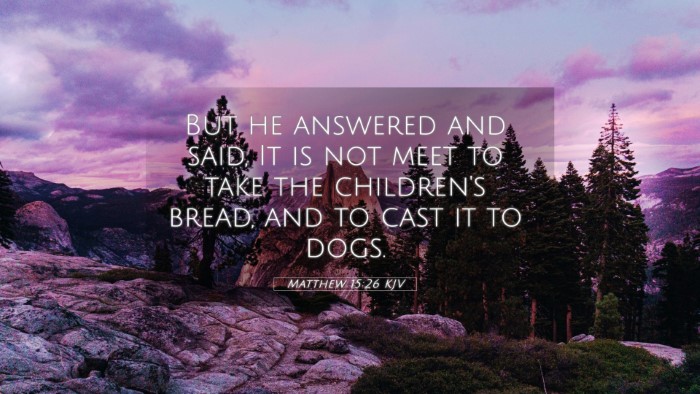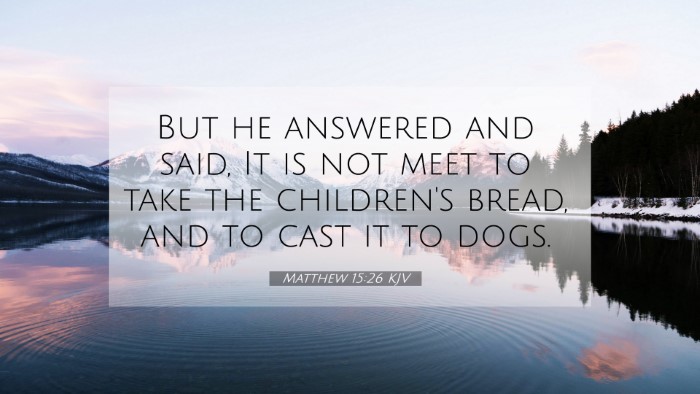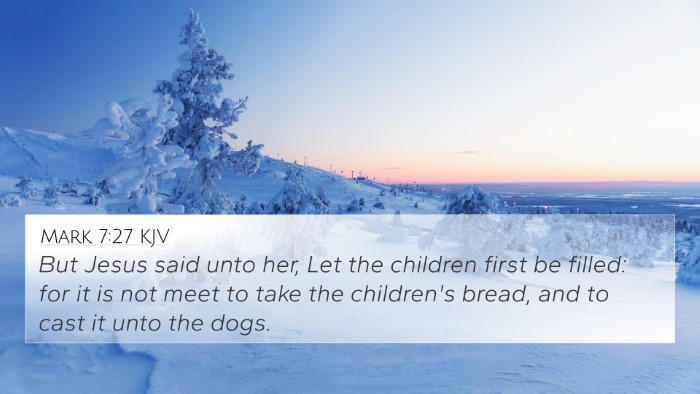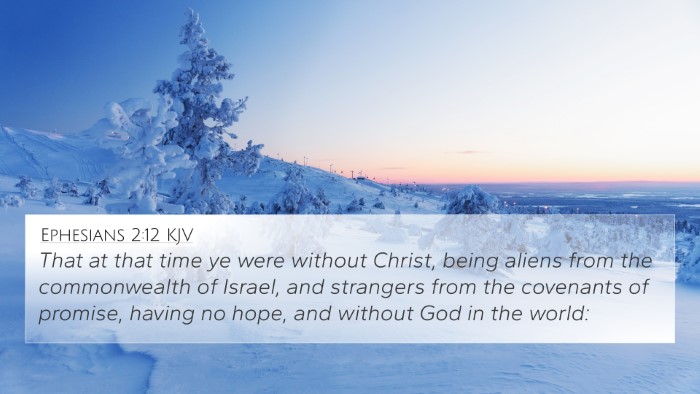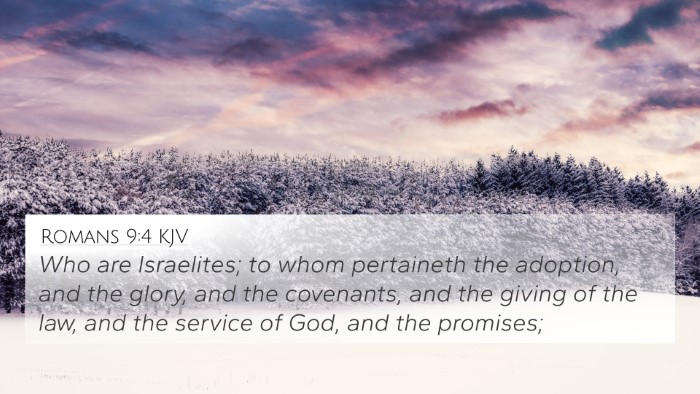Bible Verse Meaning: Matthew 15:26
Verse Reference: Matthew 15:26 - "But he answered and said, It is not meet to take the children's bread, and to cast it to dogs."
This verse occurs during an encounter between Jesus and a Canaanite woman who seeks healing for her daughter. Jesus' response, seemingly harsh, has profound implications in understanding His mission and the nature of faith.
Understanding the Verse
The essence of this verse deals with the tension between Jesus' primary mission to the Israelites and the wider inclusion of Gentiles into God's grace. Here, Jesus uses the metaphor of "children" representing the Jewish people and "dogs" indicating the Gentiles, reflecting a cultural perspective of the time.
Commentary Insights
- Matthew Henry: Henry highlights that Jesus' response tests the faith of the woman and shows her determination and humility. His statement is not a denial but rather a means to draw out her faith.
- Albert Barnes: Barnes explains that Jesus was illustrating a point about the order of the gospel; initially directed towards the Jews, suggesting that God's blessings were first for His chosen people but would eventually extend to all nations.
- Adam Clarke: Clarke emphasizes that while Jesus initially refers to Gentiles dismissively, this encounter ultimately foreshadows the broader acceptance of all people into God's Kingdom, revealing the woman's great faith.
Thematic Connections
This encounter indicates several deeper themes including faith, inclusion, and the progressive revelation of God’s plan for salvation. The Canaanite woman’s faith becomes the crux of the narrative, illustrating that genuine faith transcends ethnic and cultural boundaries.
Cross-Referencing Biblical Texts
Understanding Matthew 15:26 also benefits from cross-references to other scriptures that touch upon similar themes:
- Matthew 10:5-6: Jesus sends out His disciples to the lost sheep of Israel, reinforcing His early ministry focus.
- Matthew 28:19: The Great Commission illustrates the eventual command to spread the gospel to all nations.
- Isaiah 49:6: A prophetic verse indicating that the Messiah would be a light for the Gentiles.
- John 4:9: The account of Jesus speaking with the Samaritan woman highlights His breaking of cultural barriers.
- Acts 10:34-35: Peter realizes that God shows no favoritism, furthering the theme seen in Matthew 15:26.
- Romans 1:16: Paul emphasizes the power of the gospel for everyone, first for the Jew, then for the Gentile.
- Galatians 3:28: Paul speaks about unity in Christ, regardless of ethnicity or status.
Conclusion
Through a deeper understanding of Matthew 15:26, we find a rich tapestry of faith, cultural dialogue, and an evolving understanding of God's grace—that while initially centered on the Jews, His love encompasses all humanity, exemplified in the faith of those like the Canaanite woman.
Tools for Bible Cross-Referencing
For those studying this verse further, utilizing tools such as a Bible concordance, a Bible cross-reference guide, and comprehensive Bible cross-reference materials can enhance your study of the interconnections between scriptures. Such tools help in identifying connections between Old and New Testament themes and provide insights into cross-referencing Bible study methods.

